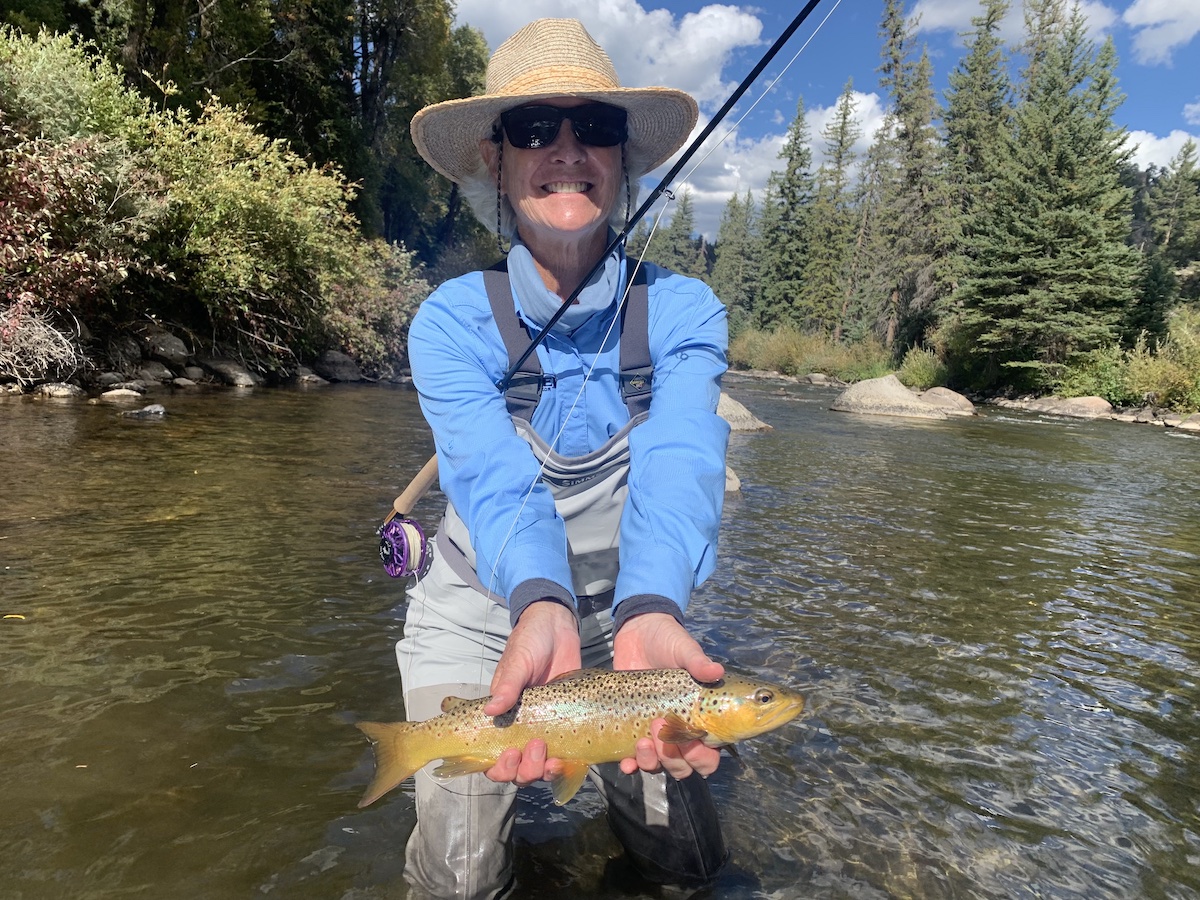The best time of the year is upon us, it’s fall in the rockies! Most of the bugs are small but the hatches have been spectacular so far. Wilder’s Master Fly Fishing Guide Ben Riedel gives expert advice to ensure success on the river in his latest Taylor River Fishing Report: October 21.
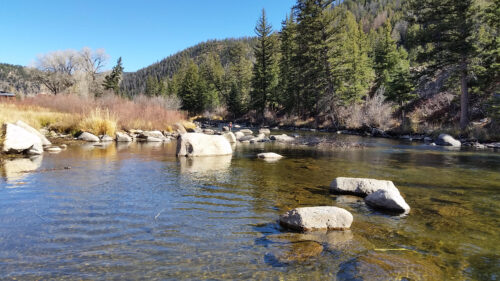 Outflow from Taylor Reservoir has dropped to 75 cfs. Hopefully that’s where it will remain for the winter. Flows at Wilder are currently around 115 cfs. Wading the river is as easy as it can be. Fish are easy to spot, but remember, if you can see them, there’s a good chance that they can see you. Stealthy approaches are paramount this time of year.
Outflow from Taylor Reservoir has dropped to 75 cfs. Hopefully that’s where it will remain for the winter. Flows at Wilder are currently around 115 cfs. Wading the river is as easy as it can be. Fish are easy to spot, but remember, if you can see them, there’s a good chance that they can see you. Stealthy approaches are paramount this time of year.
Mornings on the river can be cold and a little slow. Nothing that a proper nymph rig can’t handle though. Midges are most likely the first morsel of food available to the trout. There can be midges that are too small to imitate, but also (hope for) a smattering of size 18-20. Size 18-20 Midge patterns such as a Zebra Midge, or Black Beauty are good imitations. Take pride in the challenge of getting your tiny bug to the bottom and fishing it correctly. Pay attention to the details like where your nymphs land in relation to your indicator, and how deep you are getting in the targeted water. Getting rewarded with a fish is difficult with small flies. It will happen, keep the faith.
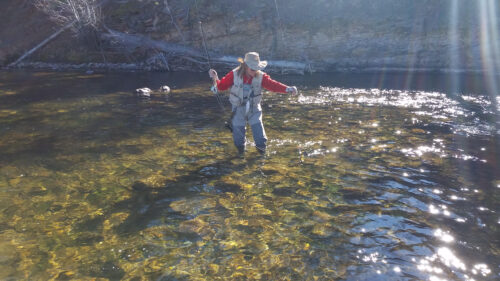 By late morning or early afternoon, expect Mayflies to become active. There have been reliable Blue Wing Olive hatches everyday, along with sporadic Slate Drakes. Stick with the usual patterns like P. Adams 16-22, BWO Dry 18-22, Barr’s BWO Emerger 18-22, Pheasant Tails 16-20, Micro Mayfly 18-20, and Hare’s Ear 18-20. As the hatch materializes, unweighted nymphs and dry flies become more effective. As the hatch starts to slow down, don’t hesitate to get a weighted dropper back on. Once there is no longer a concentration of bugs higher in the water column, fish (especially the big ones) are hesitant to come to the surface for such small bugs.
By late morning or early afternoon, expect Mayflies to become active. There have been reliable Blue Wing Olive hatches everyday, along with sporadic Slate Drakes. Stick with the usual patterns like P. Adams 16-22, BWO Dry 18-22, Barr’s BWO Emerger 18-22, Pheasant Tails 16-20, Micro Mayfly 18-20, and Hare’s Ear 18-20. As the hatch materializes, unweighted nymphs and dry flies become more effective. As the hatch starts to slow down, don’t hesitate to get a weighted dropper back on. Once there is no longer a concentration of bugs higher in the water column, fish (especially the big ones) are hesitant to come to the surface for such small bugs.
Depending on the weather, we have seen Mayfly spinners returning to the water in the morning once the sun warms the river and/or in the evening as the last warmth remains. It’s hard to go wrong with a parachute pattern or Rusty Spinner 16-20.
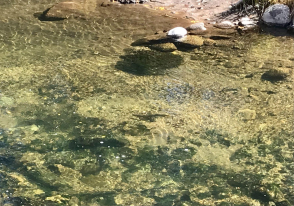
If all else fails, or you’re looking for excitement, try a streamer. The brown trout spawn in the fall and can be very territorial this time of year. The difference between taking advantage of this behavior and being cautious for conservation sake is a fine line. One thing is for certain, do not attempt to catch trout that are actively sitting on their redd. The picture on the right shows two large brown trout occupying a redd. Please educate yourself on brown trout spawning behavior and how to avoid disturbing them. These eggs are the future of the fishery.
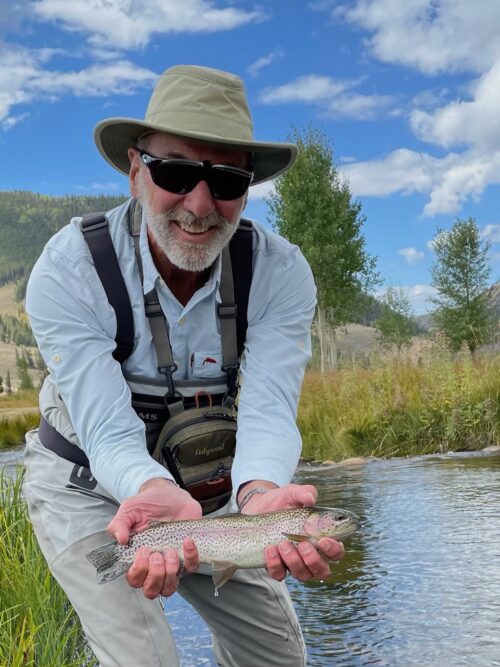 The Dream Stream has been fishing pretty well with decent stints of Midge and Blue Wing Olive activity during the day. BWO dry 16-20, P.Adams 16-20, Micro Mayflies 16-20, and Barr’s emergers are confidence inspiring patterns. Zebra Midges and Black Beauties size 16-22 are great when there’s a midge hatch. Terrestrials can still be active, but their efficacy is dwindling. Small streamers can be very productive and a lot of fun also.
The Dream Stream has been fishing pretty well with decent stints of Midge and Blue Wing Olive activity during the day. BWO dry 16-20, P.Adams 16-20, Micro Mayflies 16-20, and Barr’s emergers are confidence inspiring patterns. Zebra Midges and Black Beauties size 16-22 are great when there’s a midge hatch. Terrestrials can still be active, but their efficacy is dwindling. Small streamers can be very productive and a lot of fun also.
The ponds are quiet but don’t be fooled, most of the fish are just sipping midges. If you want to test your skills with small midge dries, the ponds are the place for you. Look for cruising fish, especially near the inlets. Large fish will sit near the inflow of water and sip small midges almost all day. A Sierra Dot 18-20, or Griffith’s Gnat 16-20 is a good choice when fish are looking for midges on the surface. Slowly stripping a weighted streamer out in the deep water can be a reliable source of action as well.
Stay warm and pinch your barbs,
Ben Riedel
Wilder on the Taylor
Master Fly Fishing Guide

